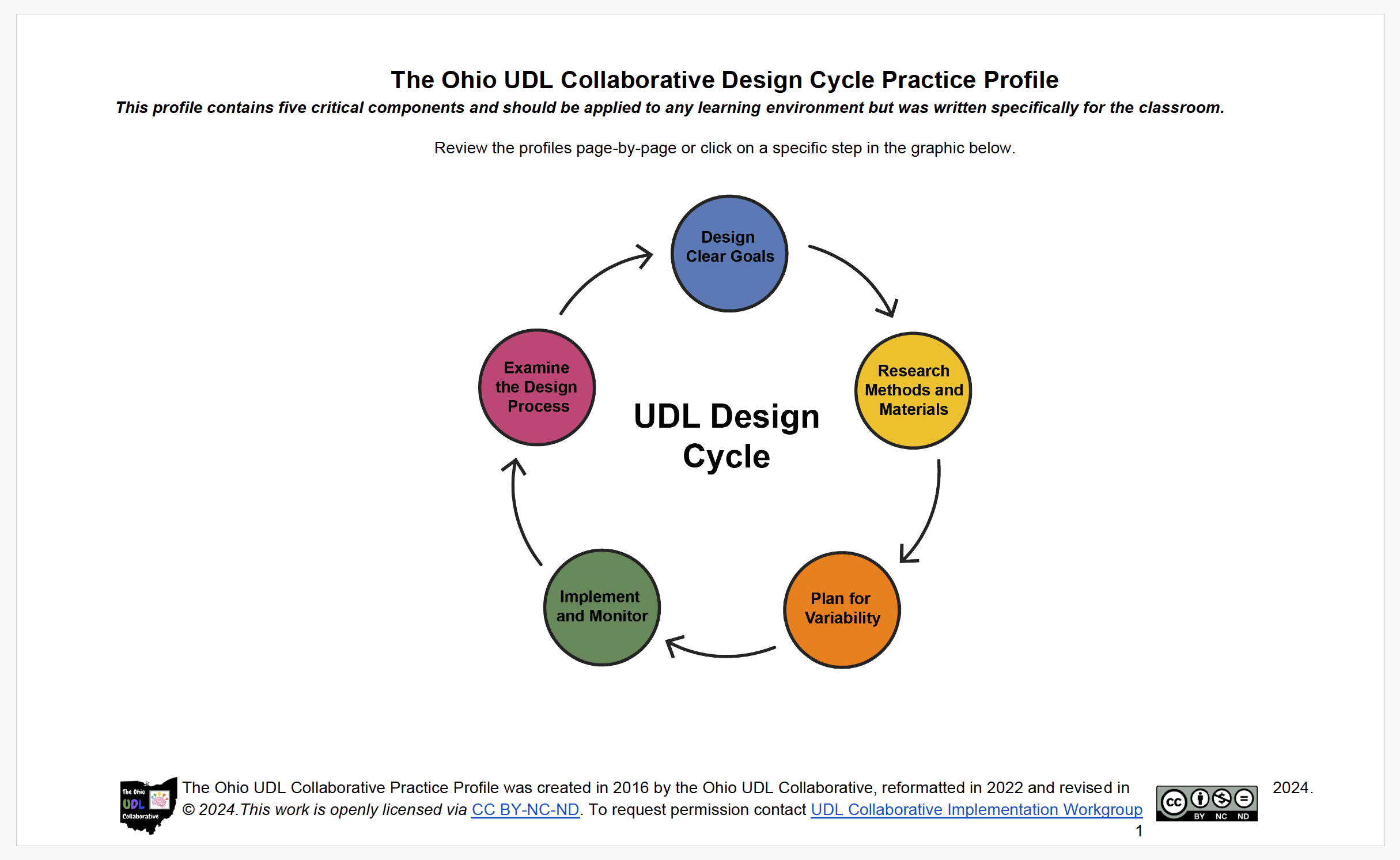The Ohio UDL Collaborative Design Cycle Practice Profile
The Ohio UDL Collaborative Design Cycle Practice Profile clarifies what UDL looks like in practice. It contains the critical components expected of UDL implementation, such as a definition of the component, why it is necessary, the range of implementation levels that can be expected, and the knowledge, skills, and abilities required to perform each practice.
The three implementation levels include:
- Ideal,
- Acceptable, and
- Unacceptable or Harmful variations of practice.
Each component is broken down into subcomponents that various educational professionals can observe, practice, and measure across the educational cascade.
- Leaders can use this to organize and prioritize training topics, inform fidelity measures, and review levels of implementation.
- Instructional coaches can use this tool to provide clarity and feedback to staff during professional learning and coaching sessions.
- Teachers can use this as a practice guide and tool for self-reflection and planning.
An initial, low-tech way to use this tool as a self-reflection is to highlight practices:
- Pink: An area for growth or not yet (may need training in this area)
- Yellow: Still developing (would benefit from additional practice and feedback)
- Green: Accomplished (I can provide feedback or model this practice for others)
Teachers can use the data from the self-reflection to set their own professional goals to improve their practice to:
- Reduce barriers for all students, including students with disabilities.
- Improve upon their own professional goals.
